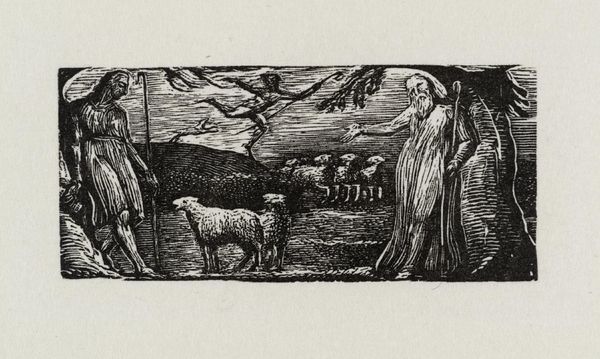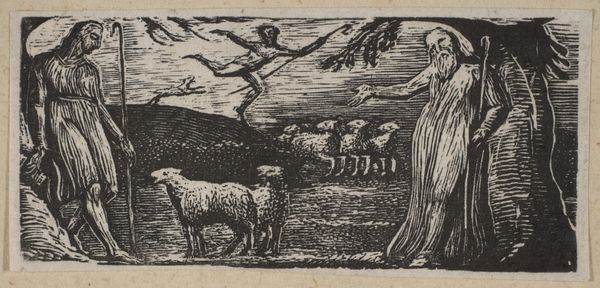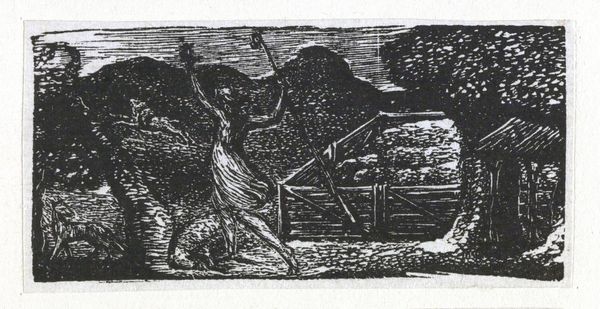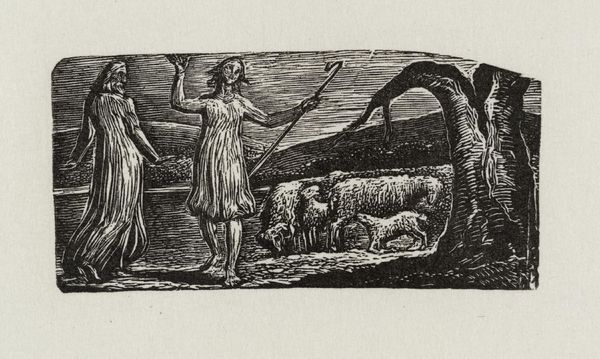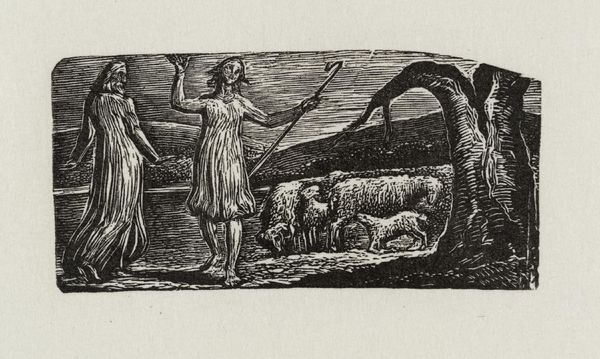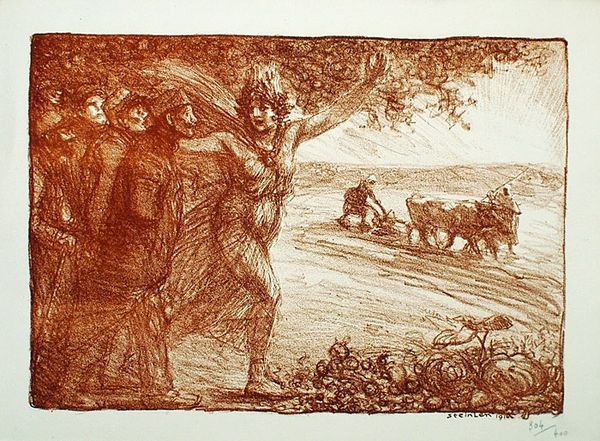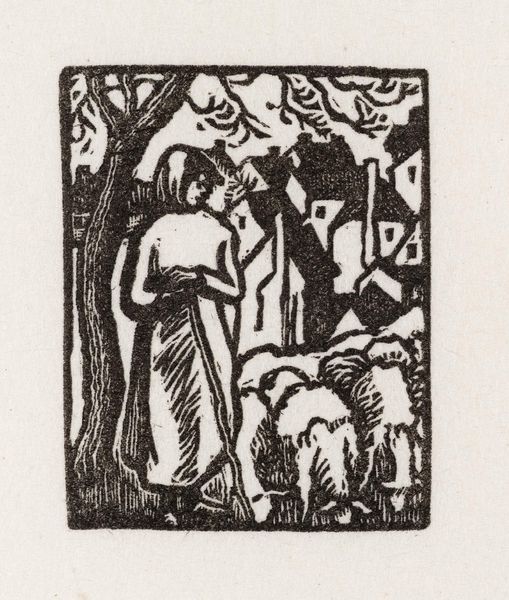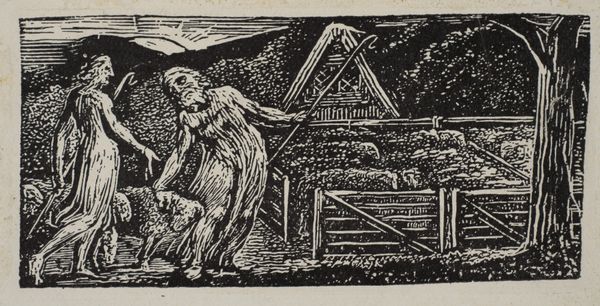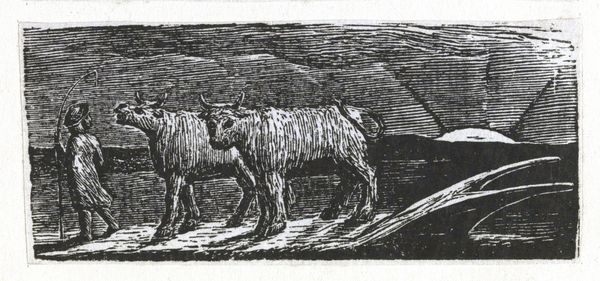
Dimensions: image: 33 x 73 mm
Copyright: NaN
Curator: This is William Blake's wood engraving, "Thenot Remonstrates with Colinet; Lightfoot in the Distance," currently residing at the Tate. It’s a small piece, just 33 by 73 millimeters. Editor: It has the feel of a dreamscape, stark and otherworldly. The figures seem both present and ethereal, caught in a moment of heightened emotion. Curator: Blake created this to illustrate Thornton's Pastorals of Virgil, reinterpreting classical themes through his own unique lens. The figures represent idealized pastoral characters, engaged here in a debate. Editor: It’s fascinating how Blake uses such simple forms to evoke such depth. The stark contrast creates a sense of tension, almost a primal unease. It makes you wonder what they’re arguing about, doesn’t it? Curator: The image resonates with Blake's broader concerns about innocence, experience, and the corrupting influences of society, key themes that preoccupied him throughout his career. Editor: It's a tiny window into Blake's very big mind, a miniature world brimming with symbolic weight. It makes me want to sit and stare at it for hours.
Comments
tate 8 months ago
⋮
http://www.tate.org.uk/art/artworks/blake-thenot-remonstrates-with-colinet-lightfoot-in-the-distance-a00114
Join the conversation
Join millions of artists and users on Artera today and experience the ultimate creative platform.
tate 8 months ago
⋮
Samuel Palmer was the most important of Blake’s followers, known as the Ancients. Palmer first met Blake in 1824. He described these illustrations to an imitation of the First Eclogue by the Roman poet Virgil as ‘visions of little dells, and nooks, and corners of Paradise’. Palmer’s art was particularly influenced by them. These prints appealed to the Ancients because they were the result of Blake’s experiments with a new medium; he had never engraved on wood before. Even at the age of sixty-four he wanted to make further explorations in his art. Gallery label, August 2004
